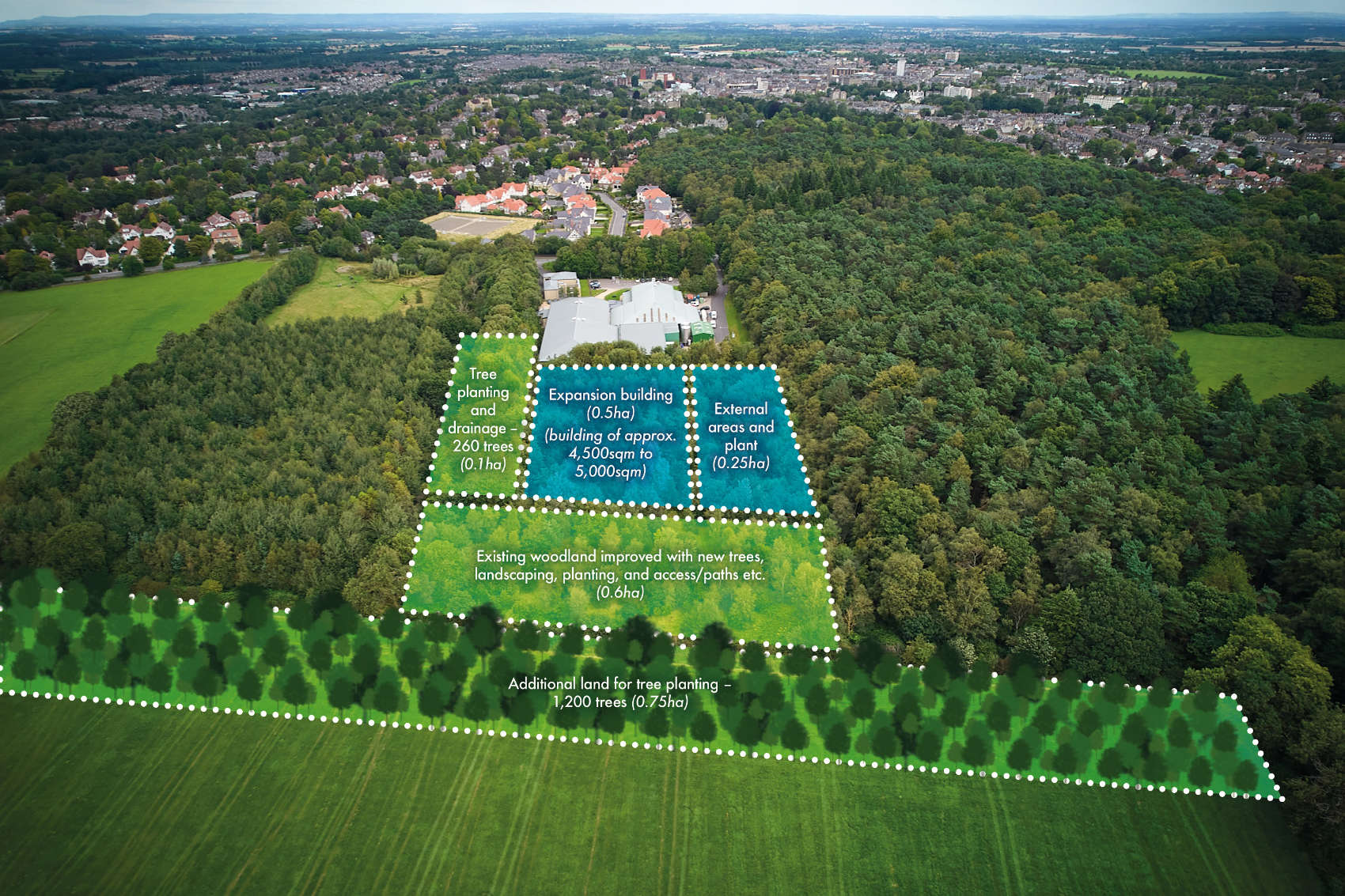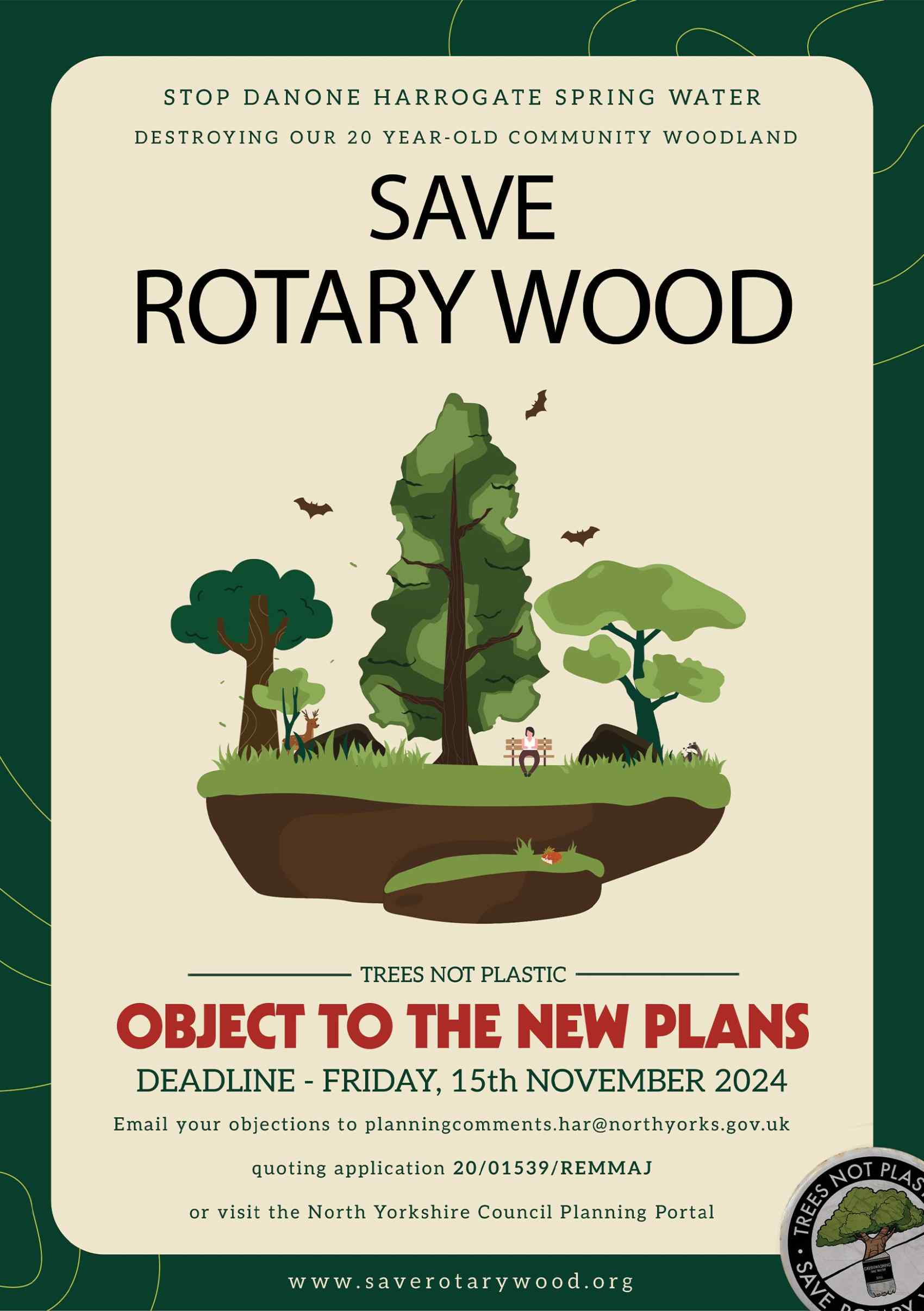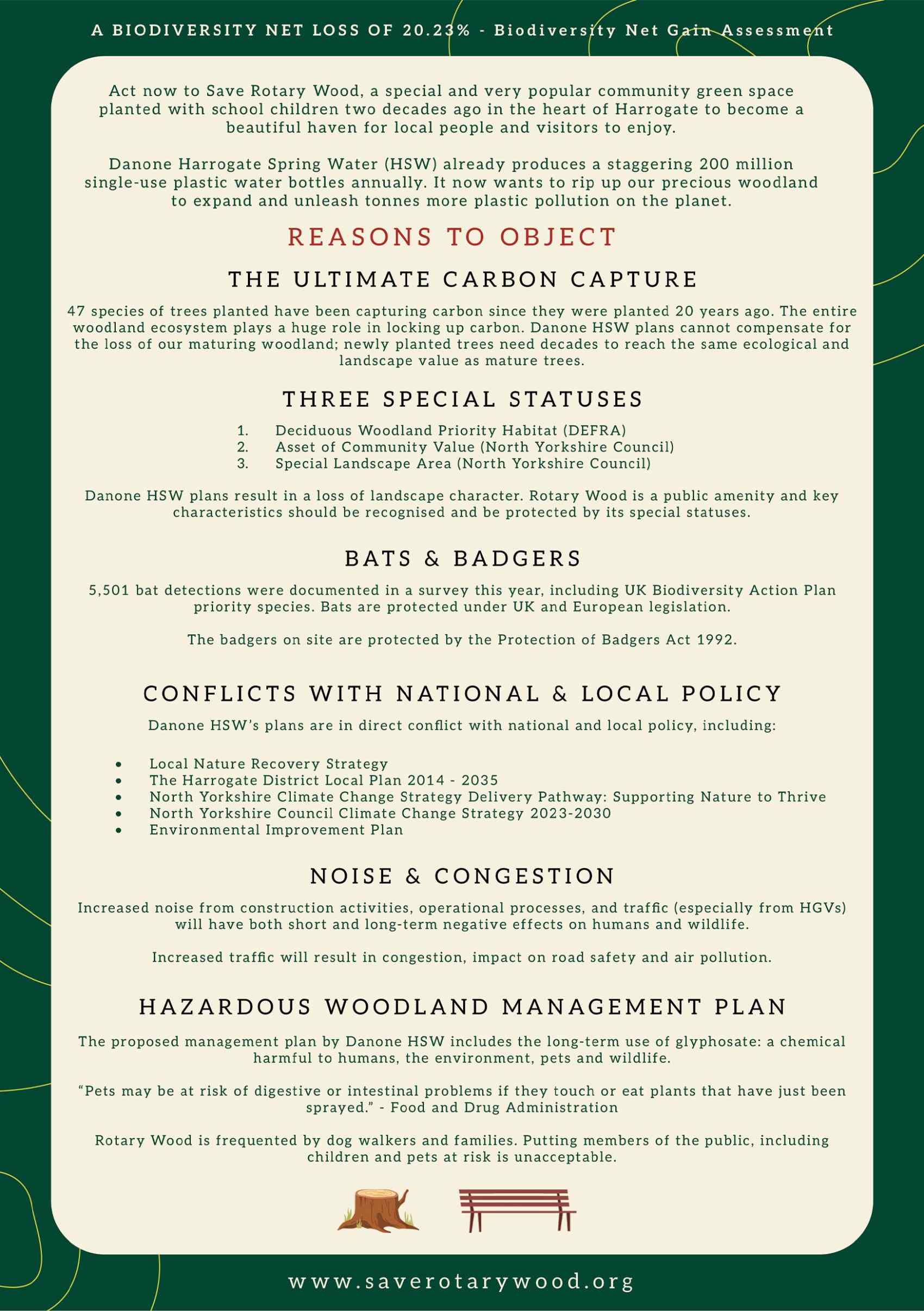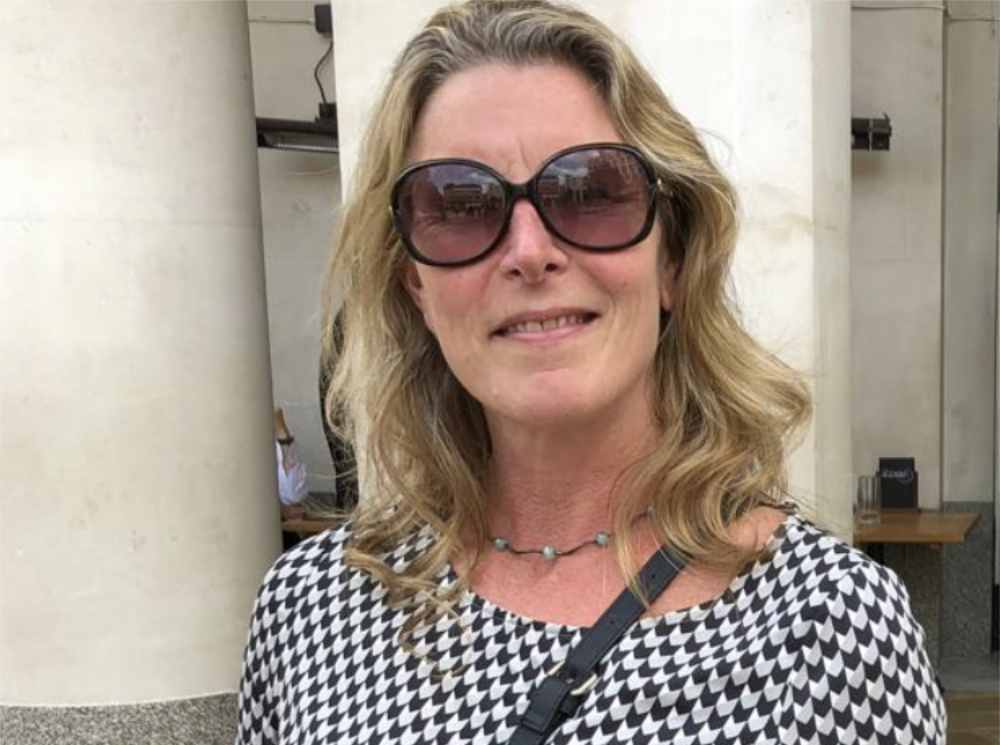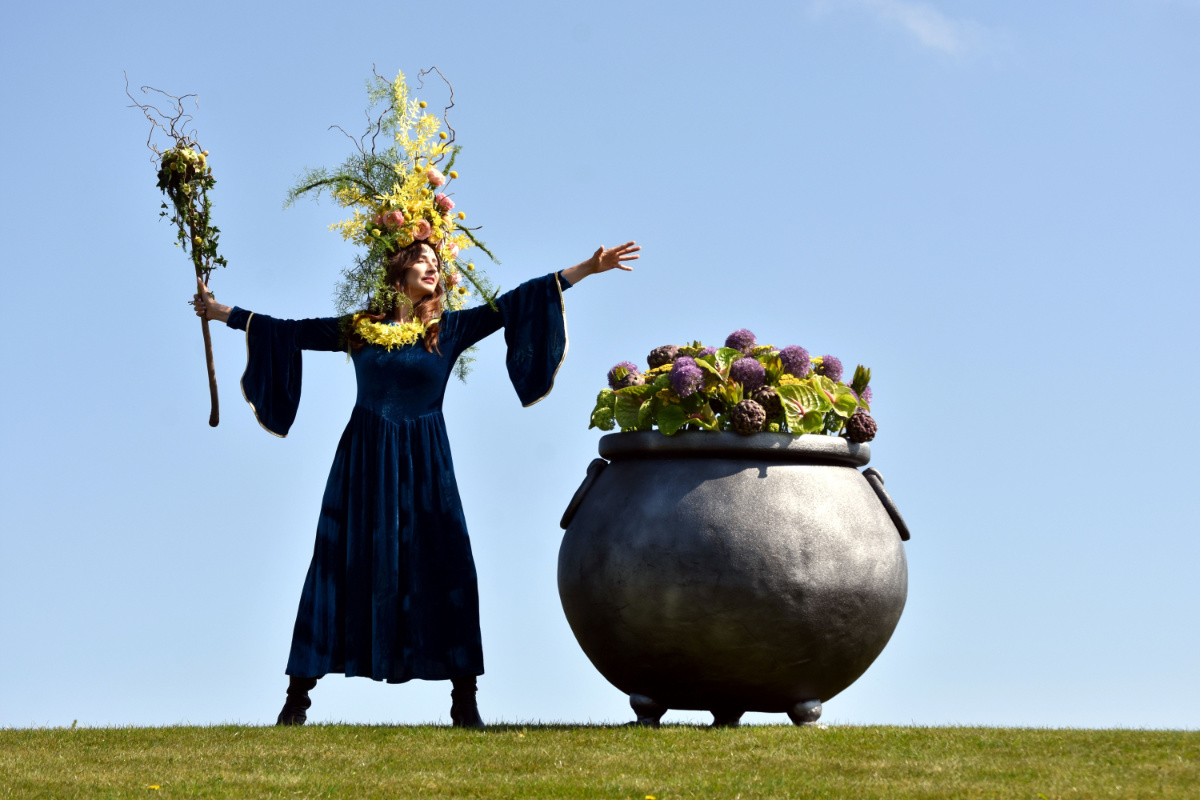The Pinewoods Conservation Group are calling for people to comment on the Danone/Harrogate Spring Water Limited Planning application to expand the bottling plant facility into an area of woodland, the Rotary Woods.
The submission of comments against the application will close on Friday, 15 November 2024.
A spokespersons for the Pinewoods Conservation Group said:
The amazing team have created a leaflet as below and a new website https://www.saverotarywood.org/ to help collate reasons to object including an overall net biodiversity loss despite assurances on replacement land.
If you have objected on earlier plans then please do object again.
We are near the target of 1000 objections so please spend a few minutes to help if you are able to do so.
|
|
|
Richard Hall, Managing Director Harrogate Spring Water, said:
For well over two years, my team and I have extensively engaged with and listened to the people of Harrogate to ensure that their views are taken on board. This has been our top priority as we have considered how best to expand what is a successful, growing local business, one which creates jobs and investment in Harrogate and proudly carries the name of the town right across the country.
In the feedback we received it was clear that the loss of trees and publicly accessible woodland was the primary concern, which is why the centrepiece of our plan is now a new community woodland of the same size as the area impacted. This will be fully accessible to the public and we hope it will become a valued resource for the local community for many years to come.
We have also committed to further tree planting which will see six times as many trees planted in Harrogate as are lost during the building process.
Throughout this process we have been guided by experts who continue to advise us on many aspects of our plans, including the design of the woodland and the tree planting programme, as well as how to provide the best habitat for nature and wildlife.
It’s been heartening that people have acknowledged the progress we have made and how we have addressed the concerns we have heard. We believe that this is a best-in-class plan to deliver business growth while also investing to minimise environmental impact.
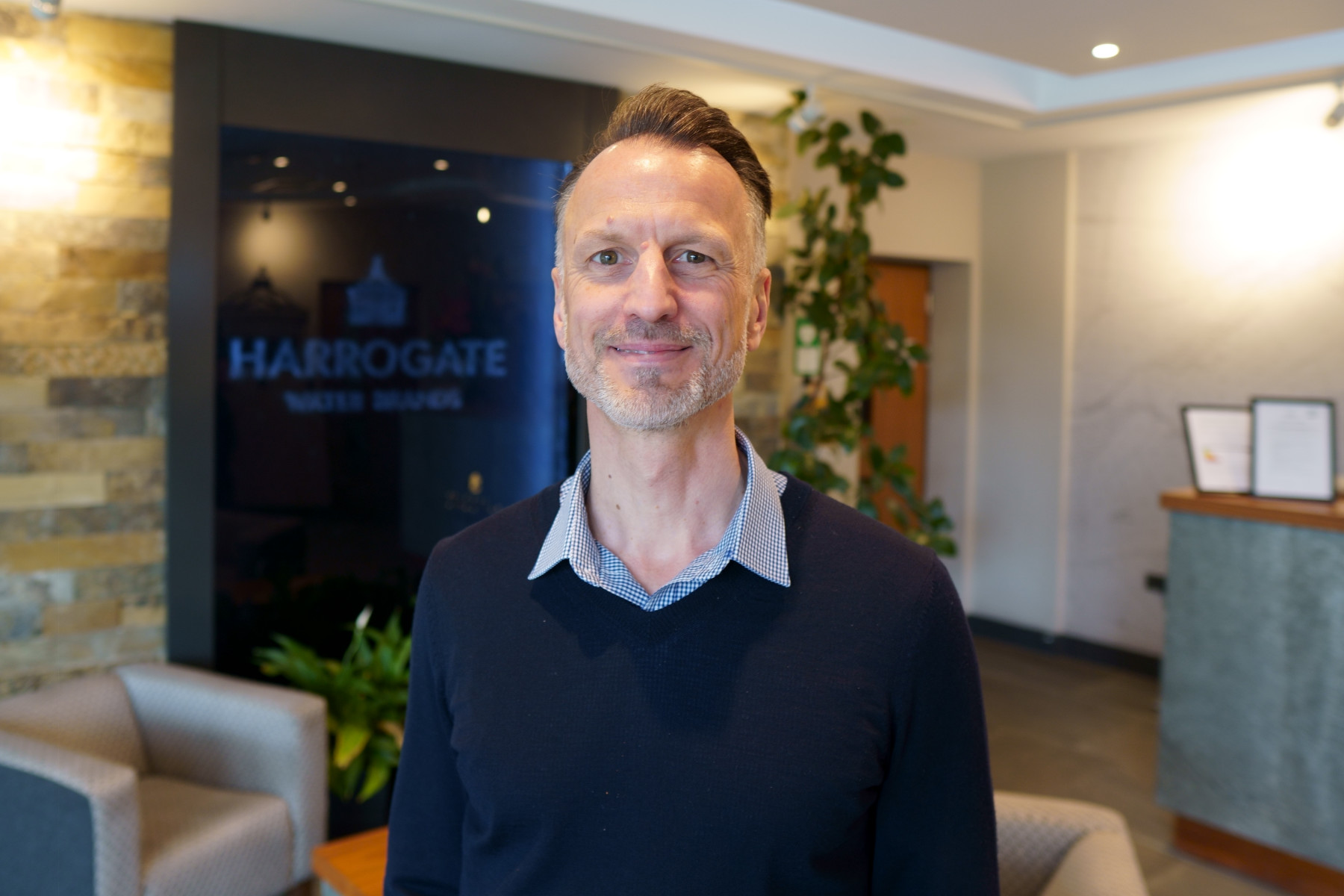
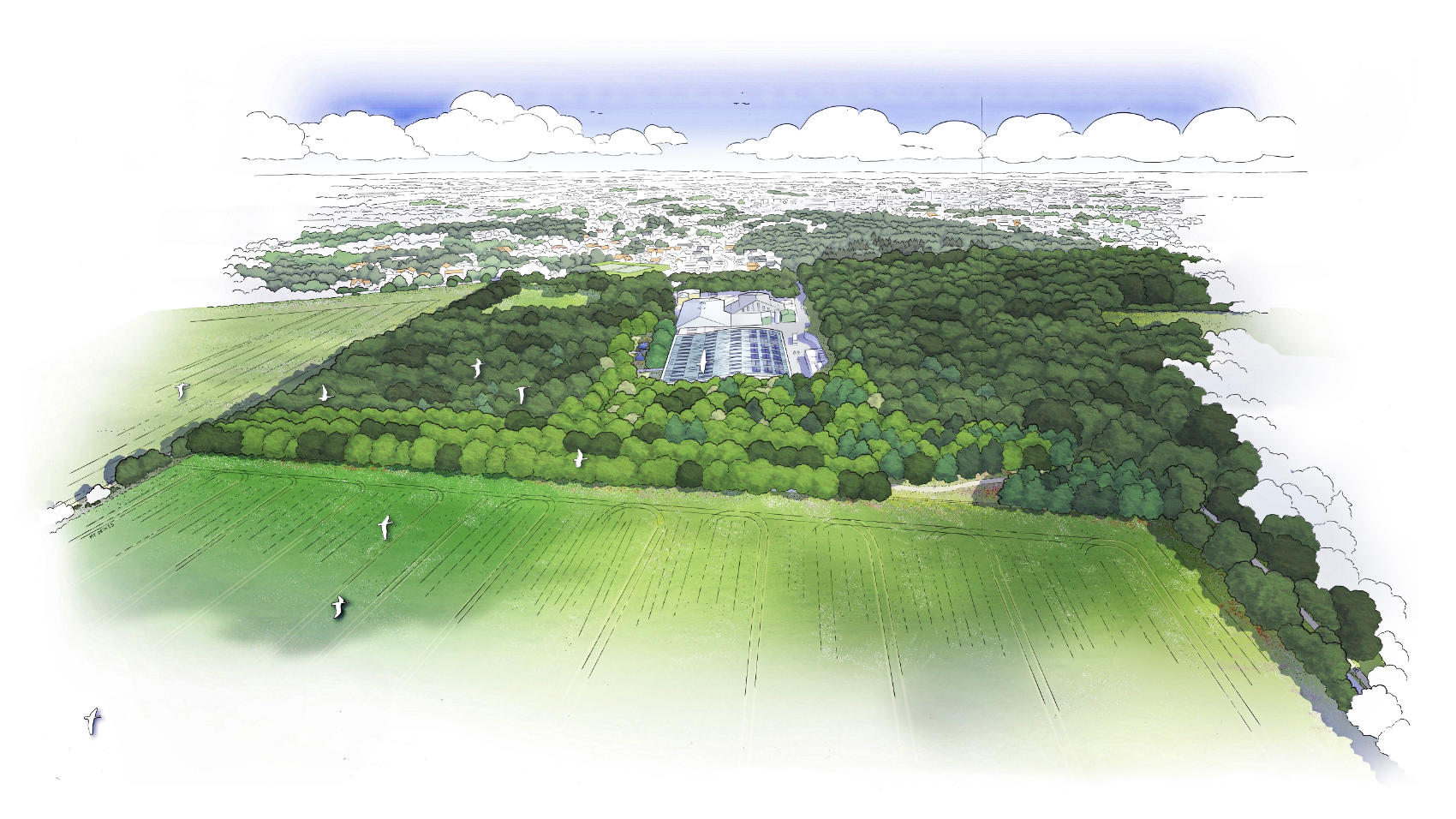
Here are the major design differences between the December 2016, May 2020, and February 2024 Design and Access Statements:
- Building Scale and Development Platform
-
- December 2016 Design: Initial concept proposed multiple options with a 4,800 square meter development platform. It emphasized a balanced layout with flexibility to either extend toward the northwestern boundary (with a visible feature elevation) or maintain a more concealed approach with perimeter planting(16_05254_OUTMAJ-Design_…).
- May 2020 Design: Restricted development size to 4,794 square meters, following the existing northern boundary with minimal public visibility. This design adhered strictly to a low-profile, functional form, without elevated or visibly prominent sections(20_01539_REMMAJ-SUPERSE…).
- February 2024 Design: Expanded to a 5,458 square meter facility with elevated building sections to accommodate site topography. The design includes visible, glazed elevations, breaking from the purely functional form of 2020(20_01539_REMMAJ-DESIGN_…).
- Landscaping and Public Access
-
- December 2016 Design: Focused on a landscape-led approach with large public green spaces, woodland glades, and integration into the Spa Trek route. Proposed a mix of native woodland and meadow areas to soften transitions to surrounding countryside(16_05254_OUTMAJ-Design_…).
- May 2020 Design: Included limited public access, primarily through boundary planting and retention of existing tree cover. This design lacked extensive public or recreational amenities, concentrating instead on screening and functional landscaping(20_01539_REMMAJ-SUPERSE…).
- February 2024 Design: Enhanced the public accessibility focus with footpaths, woodland glades, wet meadows, and picnic areas. Introduced a network of recreational routes, extending beyond simple perimeter planting(20_01539_REMMAJ-DESIGN_…).
- Elevation Treatment and Visibility
-
- December 2016 Design: Proposed two aesthetic options: Option A with metal cladding and naturalistic planting for concealment, and Option B with a visible, glazed northern elevation for a feature look. It envisioned flexibility to select between functional concealment or a more open, transparent design(16_05254_OUTMAJ-Design_…).
- May 2020 Design: Opted for a fully screened, functional design with a living wall on the northern elevation as the only notable feature. Minimal elevation treatments focused on blending with surrounding woodlands(20_01539_REMMAJ-SUPERSE…).
- February 2024 Design: Emphasized visibility with extensive use of timber cladding, curtain walling, and feature glazing on select elevations. This approach treats visible sides as aesthetic highlights, showcasing more transparency and integration with natural materials(20_01539_REMMAJ-DESIGN_…).
- Sustainable Drainage (SuDS) and Ecological Integration
-
- December 2016 Design: Introduced the concept of a SuDS pond with adjacent wetland scrapes to support biodiversity and enhance visual appeal. This was initially framed as part of the broader landscape plan to blend the site with natural surroundings(16_05254_OUTMAJ-Design_…).
- May 2020 Design: Included a simpler SuDS pond without extensive ecological integration, focusing on drainage functionality rather than habitat creation(20_01539_REMMAJ-SUPERSE…).
- February 2024 Design: Advanced the SuDS system into a key ecological feature, including a naturalized pond, wet meadows, and scrapes to support wildlife. This approach integrates the drainage system with landscape aesthetics and biodiversity efforts(20_01539_REMMAJ-DESIGN_…).
- Tree Strategy and Woodland Compensation
-
- December 2016 Design: Proposed substantial native tree planting, especially along the northern and western edges, and integration of woodland glades with public access. The plan focused on visual continuity with surrounding landscapes and compensated for tree loss with extensive replanting and woodland edges(16_05254_OUTMAJ-Design_…).
- May 2020 Design: Limited new tree planting and prioritized retaining existing boundary trees with only supplementary perimeter planting. The focus remained on minimizing visual impact with functional screen planting rather than habitat complexity(20_01539_REMMAJ-SUPERSE…).
- February 2024 Design: Detailed a 3:1 tree replacement strategy with additional off-site planting at Crag Lane, increasing the number of trees planted and focusing on native species for ecological continuity. This design envisions a more active ecological compensation plan(20_01539_REMMAJ-DESIGN_…).
- Sustainability Features and Energy Efficiency
-
- December 2016 Design: Explored the option of green roofs and ribbed metal roofing, with a minor focus on sustainability(16_05254_OUTMAJ-Design_…).
- May 2020 Design: Included a living wall on the northern elevation but did not commit to other sustainability features(20_01539_REMMAJ-SUPERSE…).
- February 2024 Design: Enhanced the focus on sustainability with solar PV panels, roof lights for natural lighting, and increased green infrastructure, aligning the building with energy efficiency goals(20_01539_REMMAJ-DESIGN_…).
- Community Engagement and Economic Benefit
-
- December 2016 Design: Positioned the development as a community-integrated facility with public access to green spaces and paths, emphasizing long-term economic and employment benefits(16_05254_OUTMAJ-Design_…).
- May 2020 Design: Limited community engagement to discussions on landscaping with local groups, with minimal public access in the proposal(20_01539_REMMAJ-SUPERSE…).
- February 2024 Design: Stronger community focus with accessible paths, seating areas, and integration with Spa Trek. Also highlighted the economic benefits of expanded operations and job creation(20_01539_REMMAJ-DESIGN_…).

